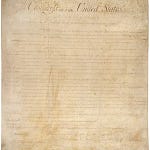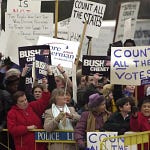This Day in Legal History: First French Execution by Guillotine
On April 25, 1792, a significant event in the history of capital punishment occurred in France: the first execution by guillotine. The individual subjected to this new method was Nicolas-Jacques Pelletier, a highwayman known for his criminal activities. The guillotine was introduced as a more humane method of execution, believed to offer a quick and less painful death compared to the previously used methods such as hanging or beheading with a sword or axe.
The invention of the guillotine is often attributed to Dr. Joseph-Ignace Guillotin, although he did not actually design the device. Dr. Guillotin proposed the idea of a mechanical device to carry out executions more humanely, and the actual design was created by a French surgeon and a German engineer named Tobias Schmidt. The guillotine was seen as a democratic death, not distinguishing between the common man and the nobility.
This first use of the guillotine took place at the Place de Grève in Paris and marked a turning point in the history of executions. The public's reaction was mixed, with some viewing it as a step forward in the pursuit of equality and justice, while others were horrified by its mechanical and impersonal nature.
The guillotine would go on to become a symbol of the Reign of Terror during the French Revolution, with thousands of individuals, including King Louis XVI and Queen Marie Antoinette, meeting their end under its blade. Its use was intended to reflect Enlightenment values of rationality and fairness in punishment, but it also came to represent the harshness and excesses of revolutionary justice.
The device continued to be used in France long after the Revolution, with the last guillotining occurring as late as 1977. It was eventually abolished in 1981 when France outlawed capital punishment altogether.
This first execution by guillotine not only marked a change in the method of carrying out death penalties in France but also reflected broader shifts in social and political thought, emphasizing equality before the law and the influence of Enlightenment ideas on judicial practices.
The U.S. Supreme Court is currently addressing the scope of presidential immunity in relation to former President Donald Trump's attempts to challenge the 2020 election results. Trump asserts that his actions, which are the basis of the criminal charges against him, were performed in his official capacity as president. However, prosecutors argue that his efforts to remain in power were not official presidential conduct.
Legal experts and the court face the complex task of distinguishing between actions that are protected by presidential immunity and those that are not. The definition of an "official act" lacks clear legal grounding, not being explicitly detailed in the Constitution or federal statutes, but was rather shaped by the Supreme Court in the 1982 Nixon v. Fitzgerald case. This precedent established that the president has absolute immunity from civil suits for actions within the "outer perimeter" of official duties.
Trump’s reliance on this decision is central to his claim of absolute immunity against current charges, which include inciting the storming of the Capitol and pushing for election result alterations. However, the scope of what constitutes an official act is still debated, with contrasting views presented in recent court cases such as Blassingame v. Trump. Here, the actions Trump took around January 6 were seen more as those of a candidate rather than a president, suggesting limits to claims of immunity.
Legal scholars are considering various criteria for presidential acts, including distinctions between campaign activities and official duties, and actions taken as commander in chief. Despite differing opinions, the possibility of Trump proving his actions were presidential is supported by some, emphasizing his role at the time in the White House and his directives for peace and national security.
The complexities in defining presidential immunity highlight the challenges the courts face in applying it to specific cases, particularly when the acts in question blur the lines between official duties and personal or electoral ambitions. The legal community and the Supreme Court are now tasked with clarifying these boundaries, potentially leading to a nuanced or "mixed decision" regarding Trump's immunity.
US Supreme Court to Parse Official Acts in Trump Immunity Fight
US Supreme Court weighs Trump's bid for immunity from prosecution | Reuters
The Generative AI Copyright Disclosure Act, introduced by Rep. Adam Schiff, aims to mandate disclosure by AI developers of copyrighted works used in training their models. This legislative proposal has been met with applause from creators like writers and artists, who feel their rights might be better protected under such a law. However, developers are concerned about the feasibility and necessity of the requirement, highlighting the vast number of works involved and the complexities in identifying and cataloging them for disclosure.
The debate touches on whether the use of millions of copyrighted works to train AI models constitutes copyright infringement. The issue is not clear-cut and is currently under legal scrutiny. The bill would require a detailed summary of copyrighted works used in AI training to be provided to the U.S. Copyright Office, a challenging task given the extensive scale of data used in training models.
Critics argue that implementing such a law could stifle innovation by imposing cumbersome barriers that could disadvantage smaller AI developers. Some believe that a system for compensating creators could be workable, similar to mechanisms like the Music Modernization Act, which deals with streaming royalties. Yet, the potential administrative and financial burden of such compliance remains a significant concern.
Advocates for AI suggest that learning by machines is akin to human learning processes, absorbing vast amounts of information to create new content. They argue that the proposed regulations could unduly restrict the development and application of AI technologies, which have broader potential benefits beyond just the arts, such as in coding and software development.
The proposed bill has further stirred a significant debate on balancing copyright protection with the advancement of generative AI technologies, reflecting broader tensions between intellectual property rights and technological innovation.
AI Copyright Bill Thrills Artists. Developers Call It Unworkable
The Environmental Protection Agency (EPA) has finalized stricter air toxic standards targeting mercury and heavy metals emissions from coal-fired power plants. The new regulations, known as the Mercury and Air Toxics Standards (MATS), aim to significantly reduce the emissions of mercury, particularly from plants using coal and lignite, a type of coal with a higher toxic content. These updated standards are projected to cut mercury emissions by 67% from coal-fired plants and 70% from lignite-powered facilities.
This final action represents the most substantial update to the MATS since their inception in 2012. The EPA reintroduced the legal basis for these standards by reaffirming the Clean Air Act's provision that deems these regulations "appropriate and necessary." This move reverses a decision made in 2020 by the Trump administration, which had removed this crucial underpinning, leaving the regulations legally exposed.
The broader implications of the updated MATS include reductions not only in mercury but also in other hazardous pollutants such as sulfur dioxide and nitrogen oxides. EPA Administrator Michael Regan emphasized that this suite of actions would address the comprehensive range of threats posed by power plants to air quality. The EPA's commitment to stringent enforcement of these standards reflects an ongoing effort to mitigate environmental health risks, particularly the neurological impacts of mercury exposure on children.
EPA Finalizes Tougher Mercury Standards for Coal-Fired Utilities
Rudolph Giuliani has initiated efforts to dismiss a lawsuit critical to his bankruptcy proceedings. The lawsuit stems from a $148 million judgment awarded to Georgia election workers Ruby Freeman and Wandrea’ ArShaye “Shaye” Moss, who successfully sued Giuliani for defamation. Giuliani had accused them of election fraud, a claim found to be false by the court. This judgment constitutes the majority of Giuliani's overall debt.
Freeman and Moss, in their February lawsuit, argued that the debt Giuliani owes cannot be discharged in bankruptcy because it was incurred through "willful and malicious injury." Giuliani, who filed for Chapter 11 bankruptcy after losing the defamation case, contends that his actions were neither willful nor malicious. He is seeking dismissal of the suit, having recently failed in an attempt to have the judgment amount reduced. Freeman and Moss are represented by Willkie Farr & Gallagher LLP, while Giuliani's legal representation is provided by Berger, Fischoff, Shumer, Wexler & Goodman, LLP. The ongoing legal battle is being observed under the case Freeman et al v. Giuliani in the Southern District of New York Bankruptcy Court.
Giuliani Looks to Toss Bankruptcy Lawsuit Over ‘Malicious’ Claim
In a contribution I wrote for Forbes yesterday, April 24th, I discussed President Biden's proposal, detailed in the Budget of the United States Government for Fiscal Year 2025, to raise capital gains rates. This proposal has generated considerable buzz, particularly around the potential new rate of 44.6% for long-term capital gains and qualified dividends. However, this figure isn't as straightforward as it may seem.
The 44.6% rate originates from a footnote in the General Explanations of the Administration’s Fiscal Year 2025 Revenue Proposals. It combines a proposed increase in the top ordinary rate to 39.6% with an additional proposal to raise the net investment income tax rate by 1.2 percentage points for incomes above $400,000. Collectively, these changes would elevate the top marginal rate on specific investment incomes to 44.6%, but only for those with incomes exceeding $1 million.
This rate is not a blanket increase but rather applies under specific conditions, which mitigates the initial shock of such a high figure. The broader argument I presented is that the portrayal of the 44.6% rate by some conservative commentators and outlets serves more as a strategic maneuver to engage public sentiment and political debate rather than a straightforward recitation of the policy. This tactic obscures the actual impact of the proposal, which is primarily targeted at perhaps less-sympathetic very high earners, rather than the general public.
The real intent of the policy seems to be to level the playing field between those with high ordinary incomes and those who earn significantly through investments. This is a response to the oft-cited fact that American ultra-rich typically pay a much lower average effective income tax rate. The policy is incremental, aiming to ensure that the wealthiest contribute a fairer share of taxes, without the need to stir undue alarm among ordinary taxpayers. Thus, the focus on high income taxpayers is meant to address disparities in tax contributions without affecting smaller business owners disproportionately.













